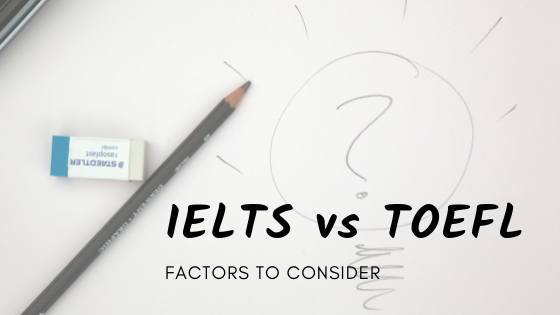International English Language Testing System (IELTS)
The IELTS is the most common English testing system used to assess your English skills in the Australian Visa process.
IELTS, the International English Language Testing System, is designed to assess the language ability of candidates who want to study or work where English is the language of communication.
IELTS is designed to assess English language skills at all levels. There is no such thing as a pass or fail in IELTS.
Results are reported as band scores on a scale from 1 (the lowest) to 9 (the highest).
| IELTS Band Score Scale | |
|---|---|
| 9 | Expert user |
| 8 | Very good user |
| 7 | Good user |
| 6 | Competent user |
| 5 | Modest user |
| 4 | Limited user |
| 3 | Extremely limited user |
| 2 | Intermittent user |
| 1 | Non-user |
| 0 | Did not attempt the test |
IELTS Academic measures the English language proficiency needed for an academic, higher education environment.
IELTS General Training measures English language proficiency in a practical, everyday context. This version of the test is also often a visa requirement for those planning to migrate to English speaking countries including Australia, the UK, and New Zealand.
Listening
Timing: Approximately 30 minutes (plus 10 minutes’ transfer time).
Questions: There are 40 questions.
A variety of question types is used, chosen from the following: multiple choice, matching, plan/map/diagram labelling, form completion, note completion, table completion, flow-chart completion, summary completion, sentence completion, short-answer questions.
Test Parts: There are 4 sections:
- Section 1 is a conversation between two people set in an everyday social context (e.g. a conversation in an accommodation agency).
- Section 2 is a monologue set in an everyday social context (e.g. a speech about local facilities or a talk about the arrangements for meals during a conference).
- Section 3 is a conversation between up to four people set in an educational or training context (e.g. a university tutor and a student discussing an assignment, or a group of students planning a research project)
- Section 4 is a monologue on an academic subject (e.g. a university lecture)
Each section is heard once only.
A variety of voices and native-speaker accents is used.
Skills assessed: A wide range of listening skills is assessed, including understanding of main ideas and specific factual information; recognising opinions, attitudes and purpose of a speaker; and following the development of an argument.
Marking: Each correct answer receives 1 mark.
Scores out of 40 are converted to the IELTS 9-band scale.
Scores are reported in whole and half bands.
Reading
Timing: 60 minutes (no extra transfer time).
Questions: There are 40 questions.
A variety of question types is used, chosen from the following: multiple choice, identifying information (True/False/Not Given), identifying writer’s views/claims (Yes/No/Not Given), matching information, matching headings, matching features, matching sentence endings, sentence completion, summary completion, note completion, table completion, flowchart completion, diagram label completion, short-answer questions.
Test Parts: There are 3 sections.
The total text length is 2,150-2,750 words.
Academic Reading
Each section contains one long text. Texts are authentic and are taken from books, journals, magazines and newspapers. They have been written for a non-specialist audience and are on academic topics of general interest. Texts are appropriate to, and accessible to, candidates entering undergraduate or postgraduate courses or seeking professional registration. Texts range from the descriptive and factual to the discursive and analytical. Texts may contain non-verbal materials such as diagrams, graphs or illustrations. If texts contain technical terms, then a simple
glossary is provided.
General Training Reading
- Section 1 contains two or three short factual texts, one of which may be composite (consisting of 6-8 short texts related by topic, e.g. hotel advertisements). Topics are relevant to everyday life in an English-speaking country.
- Section 2 contains two short factual texts focusing on work-related issues (e.g. applying for jobs, company policies, pay and conditions, workplace facilities, staff development and training).
- Section 3 contains one longer, more complex text on a topic of general interest.
Texts are authentic and are taken from notices, advertisements, company handbooks, offi cial documents, books, magazines and newspapers.
Skills assessed: A wide range of reading skills is assessed, including reading for gist, reading for main ideas, reading for detail; understanding inferences and implied meaning; recognising a writer’s opinions, attitudes and purpose; and following the development of an argument.
Marking: Each correct answer receives 1 mark.
Scores out of 40 are converted to the IELTS 9-band scale.
Scores are reported in whole and half bands.
Writing
Timing: 60 minutes.
Tasks: There are 2 tasks. Candidates are required to write at least 150 words for Task 1 and at least 250 words for Task 2.
Test Parts: There are 2 parts.
Academic Writing
- In Task 1, candidates are presented with a graph, table, chart or diagram and are asked to describe, summarise or explain the information in their own words. They may be asked to describe and explain data, describe the stages of a process, how something works or describe an object or event.
- In Task 2, candidates are asked to write an essay in response to a point of view, argument or problem.
The issues raised are of general interest to, suitable for and easily understood by candidates entering undergraduate or postgraduate studies or seeking professional registration.
Responses to Task 1 and Task 2 should be written in a formal style
General Training Writing
- In Task 1, candidates are presented with a situation and are asked to write a letter requesting information or explaining the situation. The letter may be personal, semi-formal or formal in style.
- In Task 2, candidates are asked to write an essay in response to a point of view, argument or problem. The essay can be slightly more personal in style than the Academic Writing Task 2 essay.
Topics are of general interest.
Skills assessed: In both tasks, candidates are assessed on their ability to write a response which is appropriate in terms of content, the organisation of ideas, and the accuracy and range of vocabulary and grammar.
Academic Writing
- In Task 1, depending on the task type, candidates are assessed on their ability to organise, present and possibly compare data; to describe the stages of a process or procedure; to describe an object or event or sequence of events; to explain how something works.
- In Task 2, depending on the task type, candidates are assessed on their ability to present a solution to a problem; to present and justify an opinion; to compare and contrast evidence, opinions and implications; to evaluate and challenge ideas, evidence or an argument.
General Training Writing
- In Task 1, depending on the task type, candidates are assessed on their ability to engage in personal correspondence in order to: elicit and provide general factual information; express needs, wants, likes and dislikes; express opinions (views, complaints etc.).
- In Task 2, candidates are assessed on their ability to provide general factual information; to outline a problem and present a solution; to present and possibly justify an opinion; to evaluate and challenge ideas, evidence or an argument.
Marking: Candidates are assessed on their performance on each task by certificated IELTS examiners according to the four criteria of the IELTS.
Writing Test Band Descriptors (task achievement/response, coherence and cohesion, lexical resource, grammatical range and accuracy).
The public version of the band descriptors can be found at www.ielts.org/researchers/score_processing_and_reporting.aspx
Task 2 contributes twice as much as Task 1 to the Writing score.
Scores are reported in whole and half bands.
Speaking
Timing: 11-14 minutes.
Tasks: The Speaking test is a 3-part face-to-face oral interview with an examiner.
The Speaking test is recorded.
Test Parts: There are 3 parts:
- Part 1 Introduction and interview (4-5 minutes).
The examiner introduces him/herself and asks the candidate to introduce him/herself and confirm his/her identity. The examiner asks the candidate general questions on familiar topics, e.g. home, family, work, studies and interests.
- Part 2 Individual long turn (3-4 minutes).
The examiner gives the candidate a task card which asks the candidate to talk about a particular topic and which includes points which the candidate can cover in their talk. The candidate is given 1 minute to prepare their talk, and is given a pencil and paper to make notes. The candidate talks for 1-2 minutes on the topic. The examiner then asks the candidate one or two questions on the same topic.
- Part 3 Two-way discussion (4-5 minutes).
The examiner asks further questions which are connected to the topic of Part 2. These questions give the candidate an opportunity to discuss more abstract issues and ideas.
Skills assessed: A wide range of speaking skills is assessed, including the ability to communicate opinions and information on everyday topics and common experiences and situations by answering a range of questions; the ability to speak at length on a given topic using appropriate language and organising ideas coherently; and the ability to express and justify opinions and to analyse, discuss and speculate about issues.
Marking: Candidates are assessed on their performance throughout the test by certificated IELTS examiners according to the four criteria of the IELTS Speaking Test Band Descriptors (fluency and coherence, lexical resource, grammatical range and accuracy, pronunciation). The public version of the band descriptors can be found at https://www.ielts.org/ielts-for-organisations/ielts-scoring-in-detail
Scoring
Scores are reported in whole and half bands.
IELTS Listening
For the listening test, which contains 40 questions, the approximate band scores can be calculated using this table:
| Band Score | 9 | 8.5 | 8 | 7.5 | 7 | 6.5 | 6 | 5.5 | 5 | 4.5 | 4 | 3.5 | 3 | 2.5 |
| Score / 40 | 39-40 | 37-38 | 35-36 | 32-34 | 30-31 | 26-29 | 23-25 | 18-22 | 16-17 | 13-15 | 10-12 | 8-10 | 6-7 | 4-5 |
IELTS General Reading
For the general reading test, which contains 40 questions, the approximate band scores can be calculated using this table:
| Band Score | 9 | 8.5 | 8 | 7.5 | 7 | 6.5 | 6 | 5.5 | 5 | 4.5 | 4 | 3.5 | 3 | 2.5 |
| Score / 40 | 40 | 39 | 37-38 | 36 | 34-35 | 32-33 | 30-31 | 27-29 | 23-26 | 19-22 | 15-18 | 12-14 | 9-11 | 6-8 |
IELTS Academic Reading
For the academic reading test, which also contains 40 questions, but is more difficult, the approximate band scores can be calculated using this table:
| Band Score | 9 | 8.5 | 8 | 7.5 | 7 | 6.5 | 6 | 5.5 | 5 | 4.5 | 4 | 3.5 | 3 | 2.5 |
| Score / 40 | 39-40 | 37-38 | 35-36 | 33-34 | 30-32 | 27-29 | 23-26 | 19-22 | 15-18 | 13-14 | 10-12 | 8-9 | 6-7 | 4-5 |
Reference: https://www.ielts.org/







